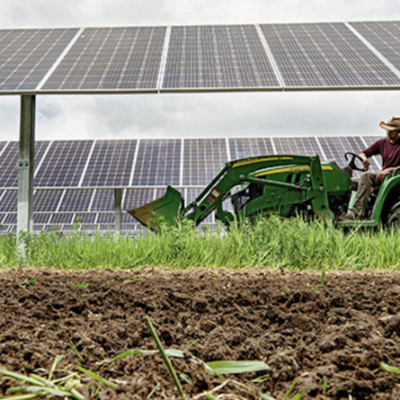For decades, the American Dream was built on suburban sprawl, single-family homes, and personal independence. However, a shift is happening—community living is making a strong comeback in the U.S. Faced with economic challenges, social isolation, and a desire for sustainability, more people are embracing shared living spaces and co-housing models.
This article explores the reasons behind the resurgence of community living, its various forms, and its impact on modern American households.
The History of Community Living in the U.S.
Early American Settlements
Before the rise of suburban life, American communities were built around shared resources. From Native American tribes to early colonial villages, communal living was the norm. Neighbors helped each other with farming, construction, and caregiving, fostering a strong sense of interconnectedness.
The Rise and Fall of Co-Housing
- In the 1960s and 1970s, intentional communities and communes flourished, driven by countercultural movements seeking alternative ways of living.
- The late 20th century saw a shift toward suburban isolation due to economic growth, increasing homeownership, and technological advancements.
- Economic and technological changes led to less dependency on communal living as consumer culture and individualism took over.
However, the drawbacks of isolated living—such as financial strain, social disconnect, and unsustainable resource consumption—are leading many to reconsider community-based lifestyles.
Why Is Community Living Making a Comeback?

1. Economic Pressures and Affordability
- Rising housing costs are pushing people toward co-housing solutions.
- Shared expenses make living in community spaces more financially viable.
- Co-living arrangements help reduce rent, utilities, and food costs, allowing residents to save more and live sustainably.
With inflation and high mortgage rates, many Americans are finding it difficult to afford single-family homes. Community living offers an alternative by making homeownership or renting more accessible, particularly for young professionals, retirees, and those seeking financial freedom.
2. Social Connection and Mental Well-Being
- Studies show that loneliness and isolation have negative health effects, including increased stress and depression.
- Living in a community fosters strong social bonds and support networks.
- Shared spaces encourage collaboration, friendships, and emotional well-being.
During the COVID-19 pandemic, social isolation became a widespread issue, making people more aware of the importance of human connection. Community living allows for meaningful interactions, shared responsibilities, and a built-in support system that enhances overall mental well-being.
3. Sustainability and Environmental Benefits
- Community living reduces carbon footprints by sharing resources.
- Co-housing developments promote sustainable energy use, shared transportation, and eco-friendly spaces.
- Fewer individual cars, appliances, and wasted resources lead to lower environmental impact.
As more Americans become environmentally conscious, sustainable communities offer a way to live in harmony with nature. Many eco-villages and co-housing communities prioritize solar energy, water conservation, and organic farming, making them attractive to those seeking a greener lifestyle.
4. Changing Work and Lifestyle Trends
- The rise of remote work allows people to live in shared communities without being tied to specific urban centers.
- Younger generations prioritize experiences over material possessions, making communal lifestyles attractive.
- Retirement communities and multi-generational homes provide practical and emotional benefits for aging individuals.
The shift toward remote and hybrid work means people are no longer bound by office locations. Many are choosing to live in co-living spaces that offer flexibility, affordability, and an opportunity to be part of a vibrant community.
Different Types of Community Living in the U.S.
1. Co-Housing Communities
- Private homes with shared common areas (kitchens, gardens, social spaces).
- Residents actively participate in governance and maintenance.
- Examples: Eco-friendly neighborhoods, urban co-housing developments.
Co-housing communities are designed to foster collaboration while maintaining individual privacy. Residents share decision-making responsibilities and create a sense of collective ownership.
2. Co-Living Spaces
- Popular among young professionals and digital nomads.
- Fully furnished apartments with shared amenities like coworking spaces and fitness centers.
- Examples: Startups offering co-living solutions in major cities.
Co-living is gaining traction in cities where housing costs are high. Companies like Common, WeLive, and Outsite provide furnished living spaces that include utilities, cleaning services, and community events.
3. Multi-Generational Housing
- Families living under one roof, including grandparents, parents, and children.
- Reduces living costs and strengthens family bonds.
- A growing trend due to aging populations and high housing costs.
The benefits of multi-generational living include childcare support, elder care, and shared financial responsibilities. This arrangement is particularly beneficial in cultures where family togetherness is highly valued.
4. Retirement and Senior Co-Housing
- Aging Americans are opting for community-based living instead of traditional nursing homes.
- Provides independence while fostering social support and companionship.
Senior co-housing offers a middle ground between assisted living and independent living. Residents share meals, activities, and caregiving responsibilities while maintaining personal autonomy.
5. Eco-Villages and Sustainable Communities
- Designed around sustainable agriculture, renewable energy, and self-sufficient living.
- Residents share farming responsibilities, communal meals, and eco-friendly practices.
Eco-villages emphasize a low-impact lifestyle and often incorporate permaculture, renewable energy, and environmentally friendly construction materials.
The Impact on American Households
Benefits of Community Living
✔ Financial Savings – Lower housing costs, shared expenses, and affordable lifestyles. ✔ Social and Emotional Support – Reduced loneliness, increased collaboration, and strong social bonds. ✔ Environmental Sustainability – Reduced energy use, shared transportation, and minimal waste. ✔ Work-Life Balance – Co-living spaces offer professional networking and flexible workspaces.
Challenges of Community Living
✘ Privacy Concerns – Sharing spaces may not suit everyone’s lifestyle. ✘ Conflict Resolution – Differences in opinions and habits require strong communication skills. ✘ Regulatory Barriers – Zoning laws and housing regulations can limit co-housing projects.
The Future of Community Living in the U.S.
As more Americans recognize the benefits of community living, the demand for co-housing and shared living spaces is expected to grow. Cities and policymakers are beginning to support these trends by adjusting zoning laws and encouraging sustainable development.
Whether driven by economic necessity, environmental concerns, or a desire for deeper social connections, the return to community living is reshaping how Americans define home and lifestyle.
Also Read – Minimalism vs. Consumerism: The Changing Habits of American Households






